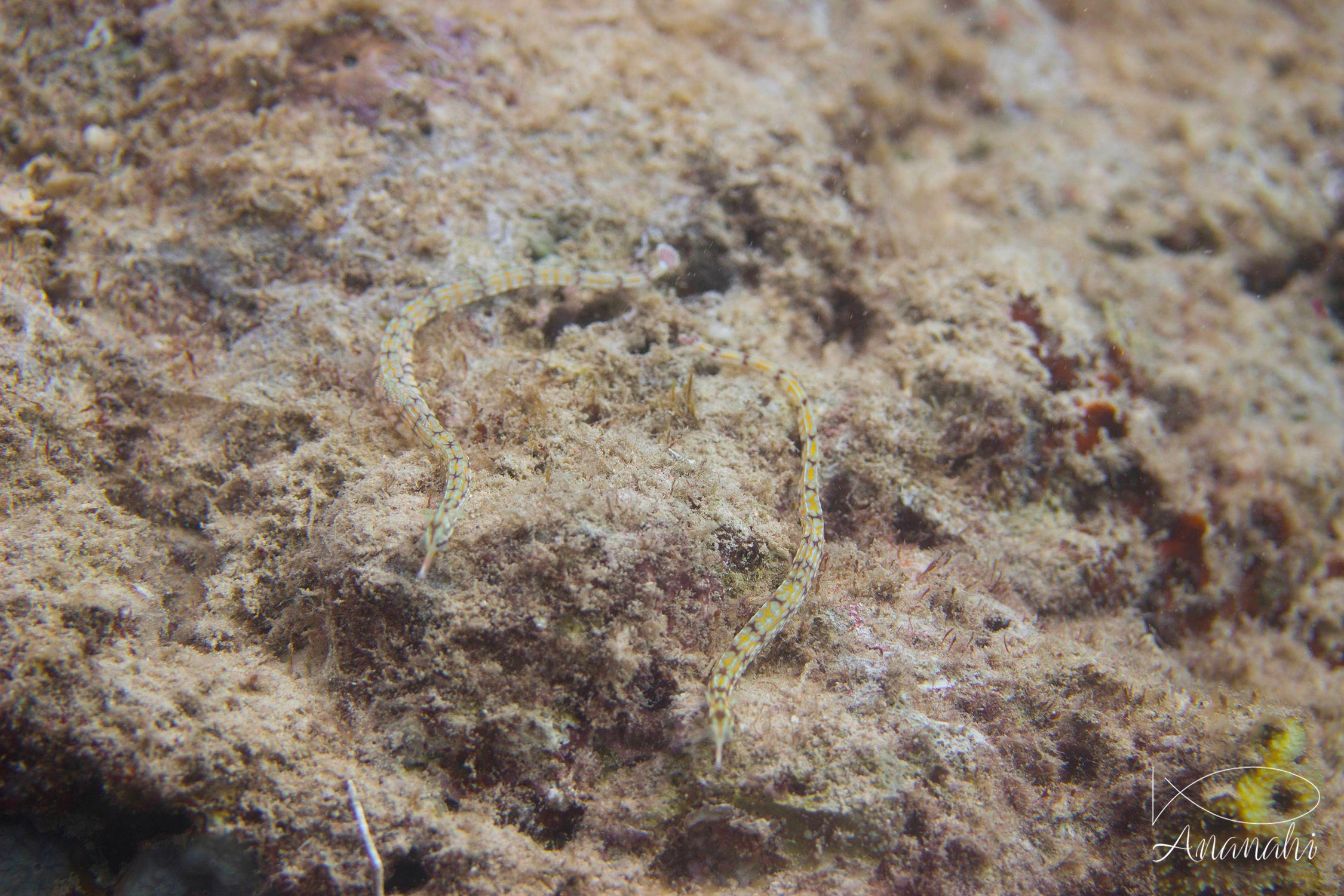
Scientific name: Corythoichthys flavofasciatus
Size:
Color:
Distinguishing feature: Light yellow body very elongated and cylindrical with white and lilac lines or spots. Red caudal fin with white lines and a thick white border. White and red muzzle punctuated with white dots.
Where did we see it: Zanzibar, Mayotte

Scientific name: Corythoichthys flavofasciatus
Size:
Color:
Distinguishing feature: Light yellow body very elongated and cylindrical with white and lilac lines or spots. Red caudal fin with white lines and a thick white border. White and red muzzle punctuated with white dots.
Where did we see it: Zanzibar, Mayotte
Quite fearful, he camouflages himself on sandy rocks.
It is often seen as a couple, it's indeed a monogamous animal.
Like seahorses, it's the male that incubates the 200 to 400 eggs that the female lays.
The pipefish is carnivorous, it feeds on very small planktonic invertebrates.
Parrotfish create a protective envelope around them when they are sleeping.
So, don't put the light on them during night dive to don't to wake them up and break this envelope.
We can hear the bull shark is very dangerous because of attacks near La Réunion island.
However, tens of them are living at 600 feet from the famous beach of Playa Del Carmen in Mexico. And there are no attacks.
Some sharks can stay motionless on the sand (white tips reef sharks, nurse sharks, etc.).
These sharks don't have to swim to bring oxygen to their gills like other sharks (grey, hammerheads tc.)